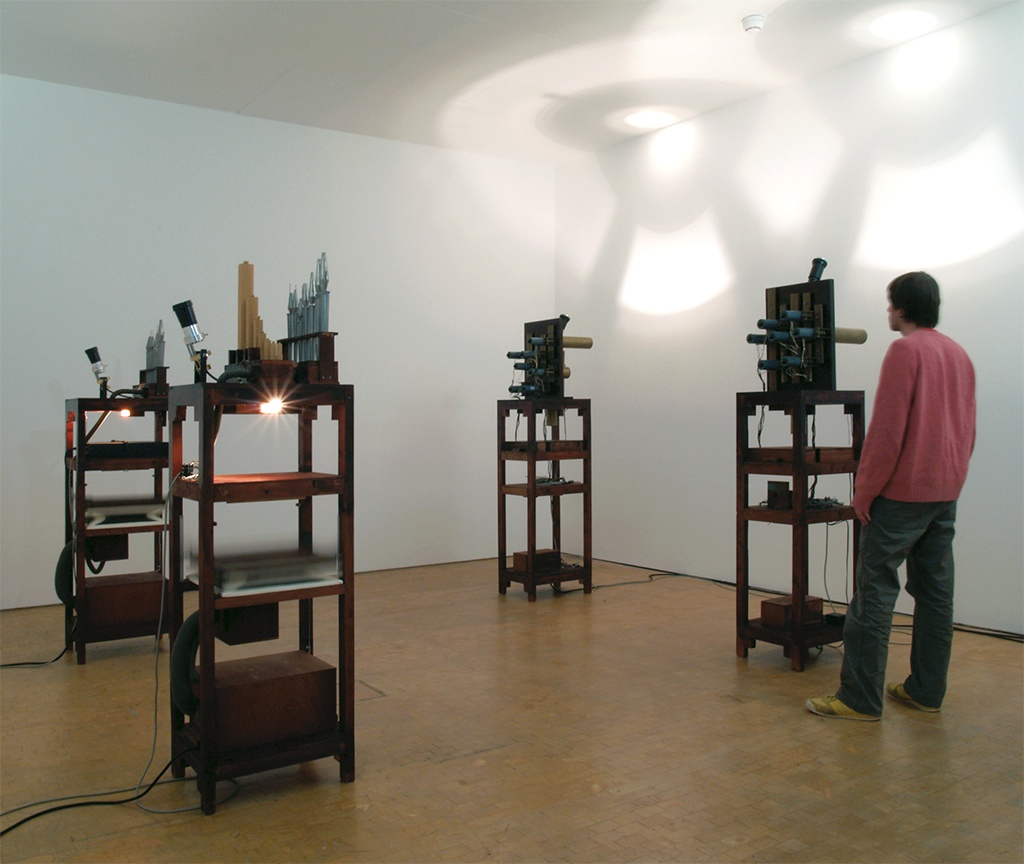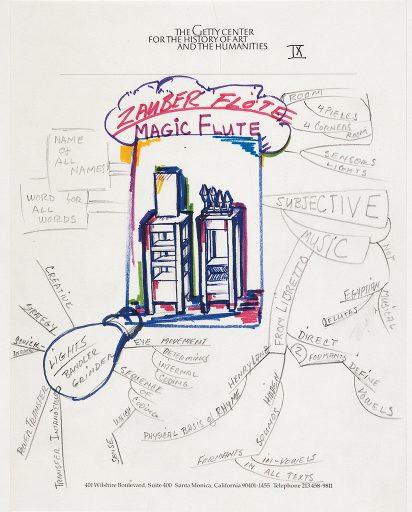photos: Franz Wamhof
Magic Flute
Magic Flute
Die Zauberflöte
1985
S 1985–1
Four-part sound sculpture
wood, metal, computers, solenoids, organ components, lighting
(no fixed composition, the visitor determines the sequence
of sounds by sensor activation)
two sculptures ca. 200 x 40 x 55 cm,
two sculptures 190 x 40 x 55 cm
Petra von Huene, Hamburg
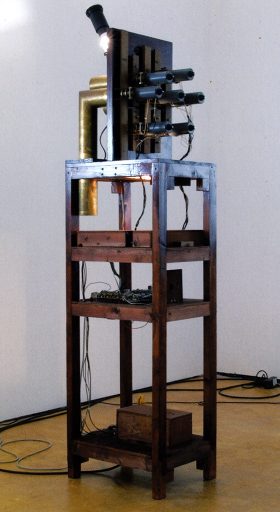
Hamburger Kunsthalle 2003,
Jan-Peter Gehrckens (© NDR 2003)
2:35 min
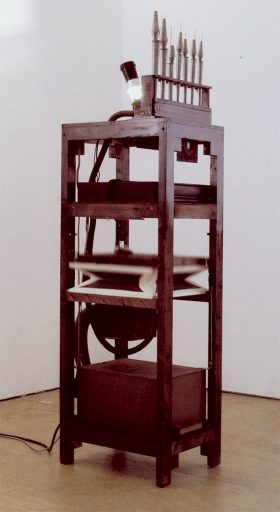
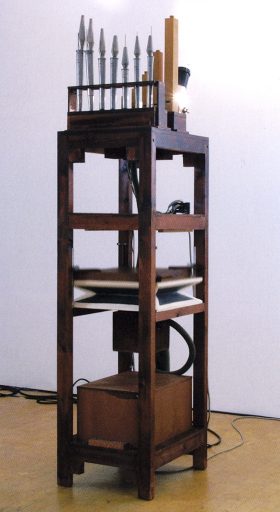
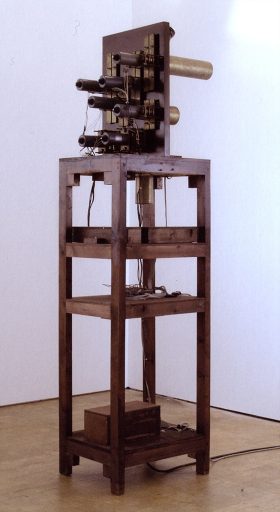
„My Zauberflöte, which consists of four objects, utilizes only […] the characteristic frequencies in the vowels. In making use of the libretto [of Schikaneder in Mozart’s ‚Zauberflöte‘] as my basic material I have reduced German vowels to six basic evenly spaced phonetic sounds. […] The text is analyzed for the sequence of vowels used, then fitted into the schema and played on the objects in their characteristic frequencies.
This, if Henry Lance is correct, is the hidden subjective melody inherent in the text. In other words: perhaps one would not need another music.
The instruments within the four objects are associated with the instruments in the opera in that the organ pipes relate to the flute and the metallophone/xylophone relate to the glockenspiel – which are the two magic instruments. The metal organ pipes further relate to the singers in that they are the type called ‘vox humana’.”
(exhib. cat. Stephan von Huene: Tune the World. Die Retrospektive, Ostfildern 2002, p. 233, 235)

